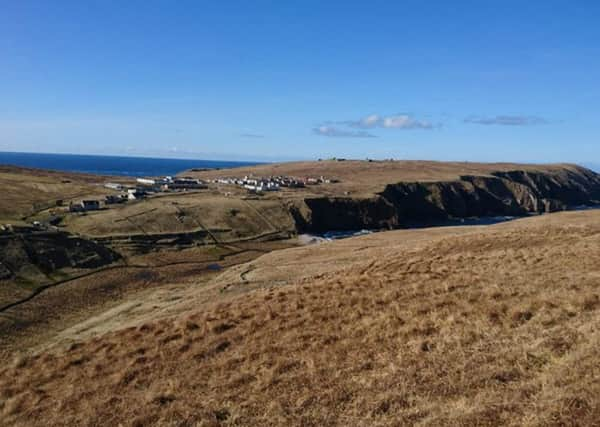Bright future for island families at former Cold War base


A ‘Keep Out’ sign was a clear indication of the hostile environment that dominated the Gallan Head peninsula – the most north-westerly point of Great Britain – for 80 years.
Just over two years ago, on a freezing cold day in a “howling gale”, several community members pulled down the sign in a symbolic statement of changing times. The land on which the Ministry of Defence had operated was now theirs after a community buy-out of the abandoned site.
Advertisement
Hide AdAdvertisement
Hide AdFiona L’Estrange is a member of the Gallan Head Community Trust, which led the successful negotiations with the MoD over the purchase of land.
She said: “The day we had the buyout confirmed, we went up in a howling gale to the sign which basically said it was MoD ground and that you would be arrested if you went any further.
“The sign had been there for many years and it wasn’t very inviting. We took it away and replaced it with a sign that said welcome.”
She added: “Recently we have had three new families moving into the village. The has been the first new blood that we’ve had for a some time. It’s very exciting.”
The trust describes Gallan Head as a place of strange beauty and powerful spiritual energy which offers tremendous views of surrounding islands, wildlife an unpolluted dark skies.
It is working to bring jobs, income and more residents to Aird Uig with social, cultural and health projects being developed to improve life in the community that sits on the very edge of the country.
The population of Aird Uig now stands at around 30 with many residents scattered over a collection of prefab houses – previously known as the domestic camp – which formerly served the RAF base.
Now a small visitor centre, Gallan Beag, is in place with residents drawing up plans for how they want the community to take shape.
Advertisement
Hide AdAdvertisement
Hide AdSinging classes have started and chess nights are a big hit in a village that sits just a mile or so from the beach where the 12th century Lewis Chessmen were discovered.
Talking telescopes have been installed in the visitor centre with a new astronomical society to be in place by the summer solstice next month.
A great deal of anticipation surrounds a new arrival expected in the village – a community pizza oven.
At one time, there were more than 200 people living around the RAF base, which had its own cinema, shop and pub, when surveillance operations at Gallan Head, from where air and submarine movements were monitored, were at their peak.
The weather was so bad at the site that occasionally the aerial on the Type 80 early warning radar was damaged by the wind, with high- speed gusts on occasion blowing vehicles off the road.
The RAF pulled its main Rotor programme of radar surveillance from Gallan Head in 1964.
It was latterly used by Nato with the MoD pulling out altogether in 2010 and the domestic camp sold off in the 1970s.
Several of the old military buildings remain abandoned on the headland with discussions ongoing as to how best to use this dramatic promontory that descends sharply into the often raging sea.
Advertisement
Hide AdAdvertisement
Hide AdPlans are being developed for the Cetus Project which will attract visitors to observe and listen to the island’s rich marine wildlife during the day and then enjoy its spectacular views of the Milky Way at night.
Named after the Whale Constellation, the Cetus Project will create an observatory where the stunning astronomical formations that hang over this tip of Lewis can be viewed.
In parallel, a listening station for whales is also planned with Professor John C Brown, Astronomer Royal for Scotland, now patron of the project which will bring a new vibrancy to this unique community.